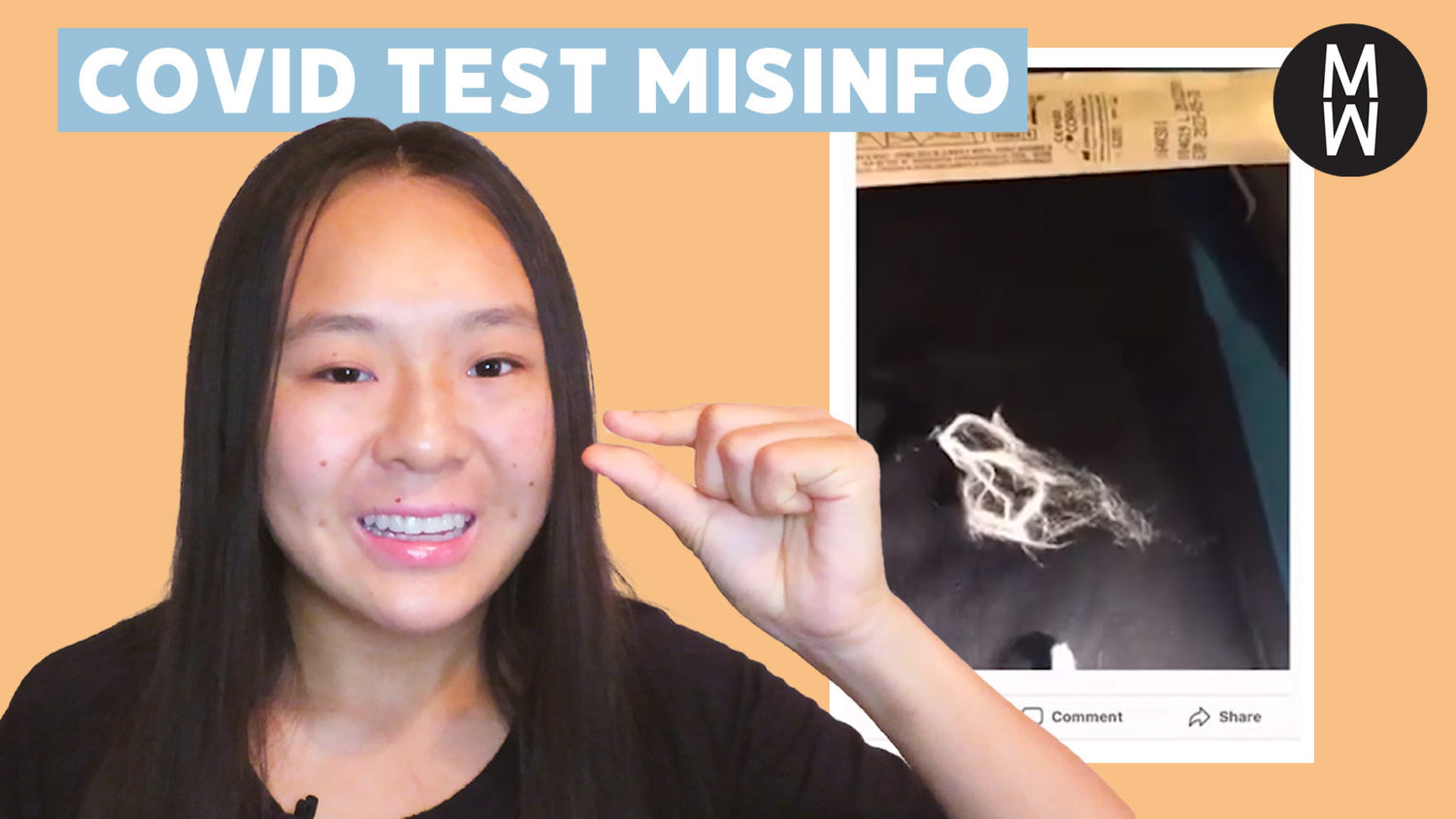COVID-19 vaccines are here — and while they’re rolling out to a wider swath of the U.S., coronavirus cases are still a reality. That means COVID-19 tests are still in demand, and there is still misinformation swirling online about them.
One such video that racked up more than 33,000 views on YouTube claims that “nanobots” — specifically nanoparticles called Morgellons — enter your brain when a COVID-19 test swab goes up your nose. The video cites silvery strands found inside swabs as evidence.
Here’s how we checked out the claim.
Look for clues in the YouTube video
One thing to note right away: COVID is spelled with a pipe symbol instead of an “i.” Intentional misspellings are one way users get around bans on misinformation on websites like YouTube. And when it comes to video evidence, stay skeptical and look out for red flags.
The video is low quality, so we can’t be certain of what we’re seeing on camera. And while the silver fleck does look like it’s moving, we don’t know if there is a fan in the room or other trick the uploader might have used to give that effect.
The video title and description refer to “nanobots,” but the narrator in the video describes silvery strands inside a COVID-19 test as “nanoparticles” and “Morgellons.” Inconsistency is something to watch, as well.
Practice lateral reading while researching the claim
Nanoparticles are super tiny. Microscopic. Nanoparticles are less than 100 nanometers in size, according to Wikipedia. (Check out this video from MediaWise Ambassador John Green for tips on how to use this powerful resource.) This is the first of several tabs we will open as we research the claim — a fact-checking technique the Stanford History Education Group refers to as lateral reading.
A sheet of paper is about 100,000 nanometers thick, according to the National Nanotechnology Initiative, which studies this topic for the U.S. government. It’s impossible to see nanoparticles with the naked eye.
So what are those silver flecks coming out of the COVID-19 test? And what are Morgellons? The test in the video is from a brand called CLASSIQSwabs, so we went straight to the source to see if we can learn more.
The company’s website lists rayon, polyester and cotton as the main materials in its test kits. A keyword search for “rayon polyester covid test” yielded a fact-check from Reuters. The article explains that polyester can build up static charges and appear to wiggle, which may be why the strands appear to be moving.
The Reuters reporter behind that piece fact-checked the same video — and spoiler — gave it a false rating.
Onto Morgellons, which Reuters covers, as well. “Morgellons disease is an unproven skin condition in which sufferers report that fibers are being released from sores on their body.” Doctors have labeled the disease a delusion. The claim that Morgellons-related fibers are living nanoparticles within the COVID-19 test swab is baseless.
Check out other sources to put the claim into context
While doing research for this fact-check, it became clear that there are a lot of false claims circulating social media about coronavirus tests and nanoparticles. And now, there is similar misinformation being spread about COVID-19 vaccines. According to another Reuters article, there are false claims that nanoparticles in one vaccine contain small robots or computers.
And PolitiFact recently checked a claim that the COVID-19 vaccines contain nanoparticles similar to microchips implanted in pets that then allow you to be tracked through 5G networks. PolitiFact gave that a Pants on Fire rating.
Both reported that the vaccine does contain lipid nanoparticles. But remember, nanoparticles are ridiculously tiny — way too small to contain a computer chip that can track you.
This is a good illustration of how misinformation can carry very similar themes across subjects.
Rating
Not legit. The strands from the testing swab in the video are shiny and appear to move because of the synthetic — nonliving — material in them.






